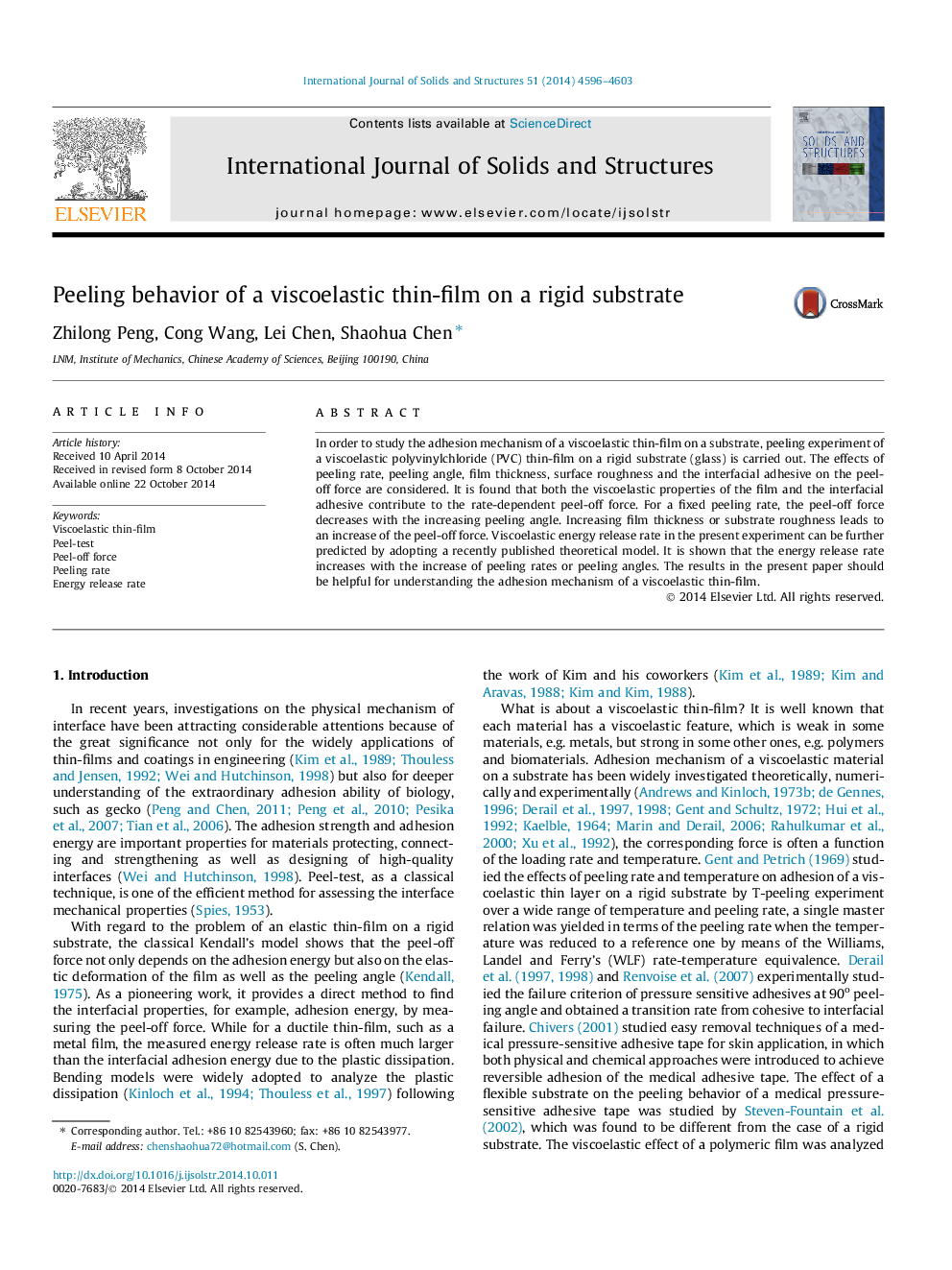| Article ID | Journal | Published Year | Pages | File Type |
|---|---|---|---|---|
| 277531 | International Journal of Solids and Structures | 2014 | 8 Pages |
In order to study the adhesion mechanism of a viscoelastic thin-film on a substrate, peeling experiment of a viscoelastic polyvinylchloride (PVC) thin-film on a rigid substrate (glass) is carried out. The effects of peeling rate, peeling angle, film thickness, surface roughness and the interfacial adhesive on the peel-off force are considered. It is found that both the viscoelastic properties of the film and the interfacial adhesive contribute to the rate-dependent peel-off force. For a fixed peeling rate, the peel-off force decreases with the increasing peeling angle. Increasing film thickness or substrate roughness leads to an increase of the peel-off force. Viscoelastic energy release rate in the present experiment can be further predicted by adopting a recently published theoretical model. It is shown that the energy release rate increases with the increase of peeling rates or peeling angles. The results in the present paper should be helpful for understanding the adhesion mechanism of a viscoelastic thin-film.
